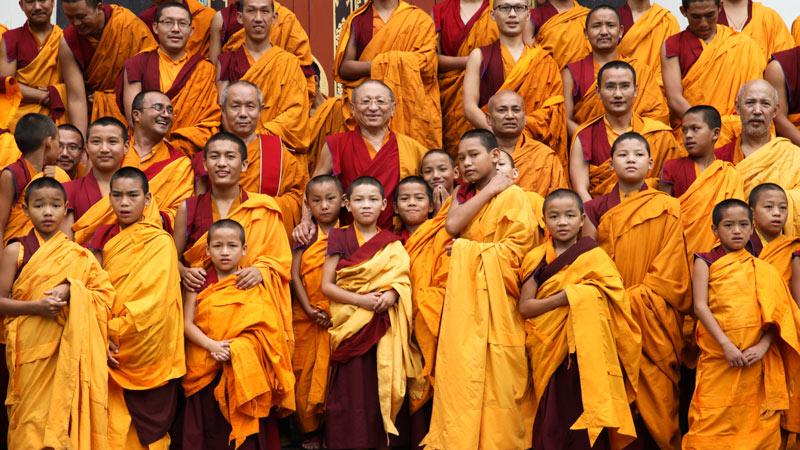Rainy Season Monastic Retreat
2500 years ago, Buddha Shakyamuni, implemented the annual Rainy Season Retreat (vassa in Pali) for the benefit of his followers and all other sentient beings.
Due to India’s heavy monsoon rainfall, it was impractical for Lord Buddha and his Sangha to continue their daily walk from village to village to beg for their food. During monsoon, many thousands of insects inhabit the muddy footpaths and the surrounding jungle. To protect these tiny beings from being crushed under foot and to prevent the farmers’ crops from being trampled, the Buddha settled his followers in one place for three months.
Each summer, the Buddha and his ordained Sangha settled near a village, and lived quietly meditating. During this time, the Sangha asked the Buddha questions to clarify their understanding of every aspect of his teachings. Eventually, these question and answer sessions during the seasonal retreats were recorded as the Sutras.
In tribute to the wisdom and compassion of Lord Buddha, Buddhist ordained throughout the world engage in some form of summertime Rainy Season Retreat.
From the Full Moon of the 6th lunar month until the New Moon of the 8th lunar month of the Tibetan calendar, the monks of Ka-Nying Shedrub Ling Monastery gather to observe their annual Rainy Season Retreat or yar-ney (Tib.) For 6 weeks, the assembly of monks, both young and old, confine themselves strictly to the monastery grounds where all their daily needs are provided and where distractions of noisy village-life are shunned. The monks enjoy this quiet retreat since it promotes the sense of a brotherhood dedicated to a single virtuous purpose—to become the best practitioners that they can possibly be and to benefit others to the best of their capacity. Additionally, this is a special time for reviewing what was learned in classes throughout the year, for intensively studying the Buddhist scriptures, and for contemplating and strictly adhering to their vinaya vows.
Day 1 of the retreat begins at dawn with a special puja wherein the monks undertake specific Vinaya vows to be observed throughout the six weeks. Next, accompanied by horns and other sacred musical instruments, the monks circumambulate the monastery, then proceed in a single-file procession from the monastery grounds through the streets of Boudhanath to circumambulate the Great Jarung Khashor Stupa at the center of the village. After returning to the monastery, the grounds of the compound are consecrated, the gates are sealed with special mantras, and the retreat begins.
Six weeks later, on the final night of their retreat, the monks assemble in the main temple along with their abbot, Chökyi Nyima Rinpoche, and the Sangha elders. In turn, each monk stands at the entrance to the temple. Fcing the large golden statue of Buddha Shakyamuni, he makes three prostrations and commences to summarize the text he has studied throughout the retreat. Each monk should express his personal understanding of that text. When the smallest monks attempt to describe their ‘profound’ insights into their philosophical studies, the temple often resounds with gales of affectionate laughter from their elders.
Three days of special pujas mark the conclusion of the retreat. Once again, the monastic assembly proceeds to the village in single-file, circumambulates the Great Stupa, and returns to the monastery. Lastly, the gak-ye ritual releases the monks from the vows taken on Day 1 of yar-ney. A week or two later, Chokyi Nyima Rinpoche traditionally sponsors a generous 3-day picnic for the monks in a nearby park where they can relax, chat, enjoy delicious meals, play music, games, and sports.
September 7: Teachings for the monks and debate at night time.
September 8: Release of the vows for Yarney
September 9: Last day of Yarney, all monks circumambulate the Boudhanath Stupa together.
